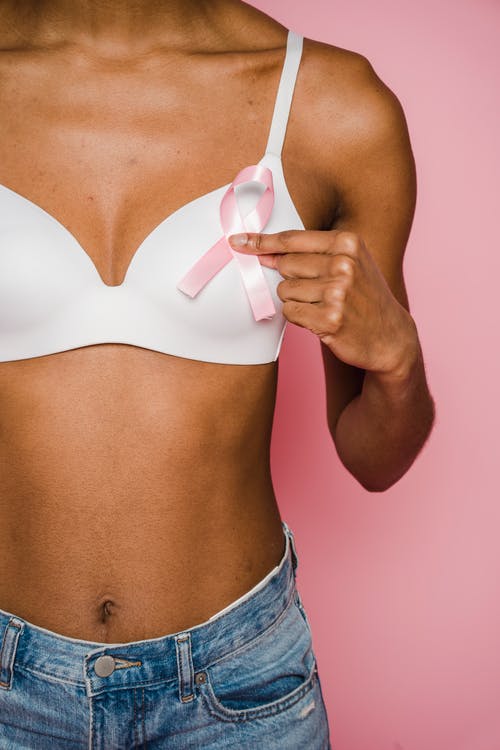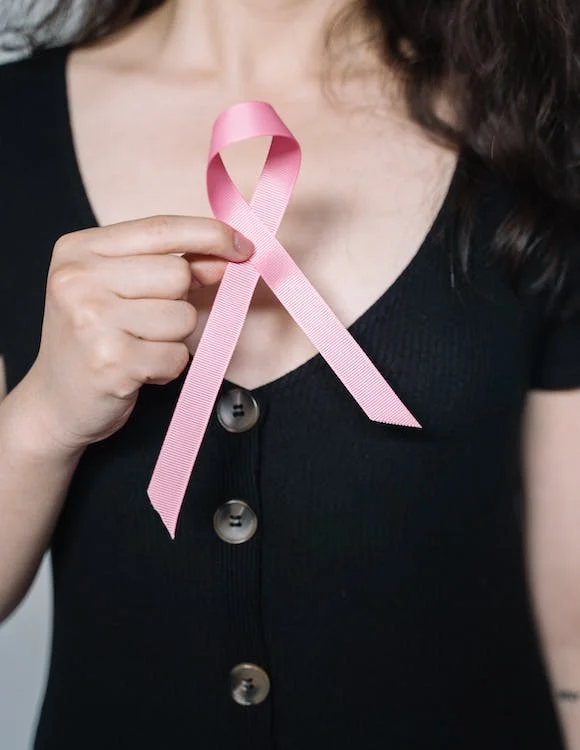Breast cancer may be a cancer that forms within the cells of the breast.
Breast Cancer is the most common cancer diagnosed in girls in the US, It can occur in any woman, but it is additionally common in girls.
Does Breast Cancer Cause Pain
Significant support for cancer awareness and funding for analysis has helped advance the diagnosis and treatment of cancer. Cancer survival rates have increased and therefore the extent of deaths related to the disease has been steadily decreasing, mostly due to factors such as earlier detection, a brand new personalized approach to treatment, and a more robust understanding of the disease.

Symptoms
Nipple changes
Changes to the nipple Open a popup window
Signs and symptoms of cancer may include:
A lump or thickening of the breast that feels completely different from the surrounding tissue
Change in breast size, shape, or appearance
Changes heal breasts, like dimples
Freshly inverted mamilla
Flaking, peeling, crusting, or peeling of the pigmented area of the skin closes the areola or breast skin
Redness or burns will heal your breasts, just like the skin of an orange. If you discover a lump or other modification in your breast—even though a recent X-ray was traditional—create a brief with your doctor for a quick analysis.
Causes Of Breast Cancer
Doctors recognize that cancer occurs when certain breast cells begin to grow abnormally. These cells divide before healthy cells and keep accumulating to form a lump or mass. The cells can spread (metastasize) through your breast to your humoral nodes or different parts of your body.
Breast cancer most often starts with cells in the milk-producing ducts (invasive ductal carcinoma). Cancer can begin in organ tissue referred to as lobules (invasive lobular carcinoma) or in different cells or tissue in the intervals of the breast.
Scientists know the secretion, regimen, and environmental factors that will increase your risk of cancer. However, it is not clear why some people who have no risk factors develop cancer, but people with risk factors do not. Cancer is probably caused by a fancy interaction between your genetic makeup and your atmosphere.
Hereditary Cancer
Doctors estimate that five to ten percent of breast cancer squares associated with factor mutations had generations of families.
Several heritably mutated genes are known to increase the likelihood of cancer. The leading known square carcinoma factor one (BRCA1) and carcinoma factor two (BRCA2), each greatly increase the risk of breast cancer and female internal reproductive organ cancer.
If you have a strong history of cancer or different types of cancer, your doctor may suggest a biopsy to help determine specific mutations in BRCA or different genes that quantify the presence in your family.
Consider asking your doctor for a referral to a genetic counselor, the UN agency will review your family health history.
Risk Factors of Breast Cancer
The problem with cancer risk is something that creates it in addition, you are likely to get cancer. However, having one or perhaps many risk factors for cancer does not necessarily mean that you will develop cancer. United Nations who develop cancer have no known risk factors other than being female only.
Factors that quantify the rate associated with increased risk of cancer include:
To be feminine. Girls are much more likely to develop cancer than men.
Increasing age. Your risk of cancer will increase with age.
Personal history of breast disease. If you have had a diagnostic breast test that revealed lobular cancer (LCIS) or atypical breast dysplasia, you are at increased risk of cancer.
Case history of breast cancer
If your mother, sister, or daughter was diagnosed with cancer, especially at a young age, your risk of cancer increases. However, most individuals diagnosed with cancer have no history of the disease.
Inherited genes that increase the risk of cancer. Binding factor mutations that increase the risk of cancer are often passed from people to the young. Leading known square measure of factor mutations known as BRCA1 and BRCA2. These genes will greatly increase your risk of cancer and various types of cancer, but they do not make cancer inevitable.
If you had chest radiation treatment as a toddler or young adult, your risk of cancer increases.
Being corpulent increases your risk of cancer.
If you start taking it before the age of twelve, the risk of cancer increases.
If you start menopause at an older age, you are more likely to develop cancer.
Girls United Nations agency gave birth to her first child in her thirties, when AN could have an increased risk of cancer.
UN agency girls who have not been pregnant have a greater risk of cancer than UN agency girls who have had one or more pregnancies.
Postmenopausal secretion medical care,
United Nations girls using secretory drugs for medical care that mix a sex hormone AND a progestogen to treat the signs and symptoms of menopause have an increased risk of cancer. The risk of cancer decreases once girls stop taking these drugs.
Drinking alcohol. Drinking alcohol increases the risk of developing cancer.
Prevention For Breast Cancer
Reducing breast cancer risk in intermediate-risk girls
Wedge-shaped pattern for breast self-examination
Breast self-examination Open pop-up window
Making changes in your existence could make it easier to reduce your risk of cancer.
Ask your doctor about cancer screening. Once ask your doctor to start cancer screening and tests, such as clinical breast exams and mammograms.
Ask your doctor about the benefits and risks of screening. Together, you’ll be able to decide which square footage of cancer screening is right for you.
Get used to your breasts with breast self-examination for breast detection. Girls would rather get used to their breasts by looking at them occasionally during breast self-exams to see what the breasts are like. If you have a brand new development, lumps, or other unusual signs on your breast, sit down with your doctor right away.
Breast awareness can’t prevent cancer, but it can help you be more aware of the conventional changes your breasts carry and detect any unusual signs and symptoms.
Drink alcohol sparingly, if at all. If you choose to drink, limit the amount of alcohol you drink to one drink each day.
Exercise most days of the week. Aim for at least half an hour of exercise most days of the week. If you haven’t been active lately, see if that’s okay or not and start slowly.
Limit the medical care of the biological time of secretion. Combined secretory medical care could increase the risk of cancer. Talk to your doctor about the benefits and risks of secretory medical care.
Some girls experience irritating signs and symptoms during menopause, and for these girls, an increased risk of cancer is also acceptable to alleviate climacteric signs and symptoms.
To reduce the risk of cancer, use the lowest dose of secretory medical care feasible for the shortest period.
Maintain a healthy weight. If your weight is healthy, try to maintain that weight. If you want to lose weight, talk to your doctor about healthy ways to do so. Reduce the amount of calories you eat each day and slowly increase the amount of exercise you do.
Choose a healthy diet. United Nations girls eat a Mediterranean diet supplemented with extra virgin vegetable oil and mixed around the bend could reduce the risk of cancer. The Mediterranean diet focuses exclusively on plant-based foods such as fruits and vegetables, whole grains, legumes, and nuts. People following a Mediterranean diet choose healthy fats such as vegetable oil instead of butter and fish rather than beef.
Reducing the risk of breast cancer in high-risk girls
If your doctor has reviewed your medical history and found that you are simply producing other factors, such as metastatic breast cancer, that increase your risk of cancer, the doctor will discuss options to reduce your risk, such as:
Preventive drugs (chemoprevention). Estrogen-blocking drugs, such as selective sex hormone receptor modulators and aromatase inhibitors, reduce the risk of cancer in high-risk girls.
These drugs carry the risk of facet effects, which is why doctors reserve these drugs for girls The United Nations has a high risk of cancer.
Preventive surgery
Girls with a high risk of cancer would rather have their healthy breasts surgically removed (prophylactic mastectomy). In addition, they would like to have their healthy ovaries removed (prophylactic oophorectomy) to reduce the risk of any cancer and cancer of the internal reproductive organs in women.







